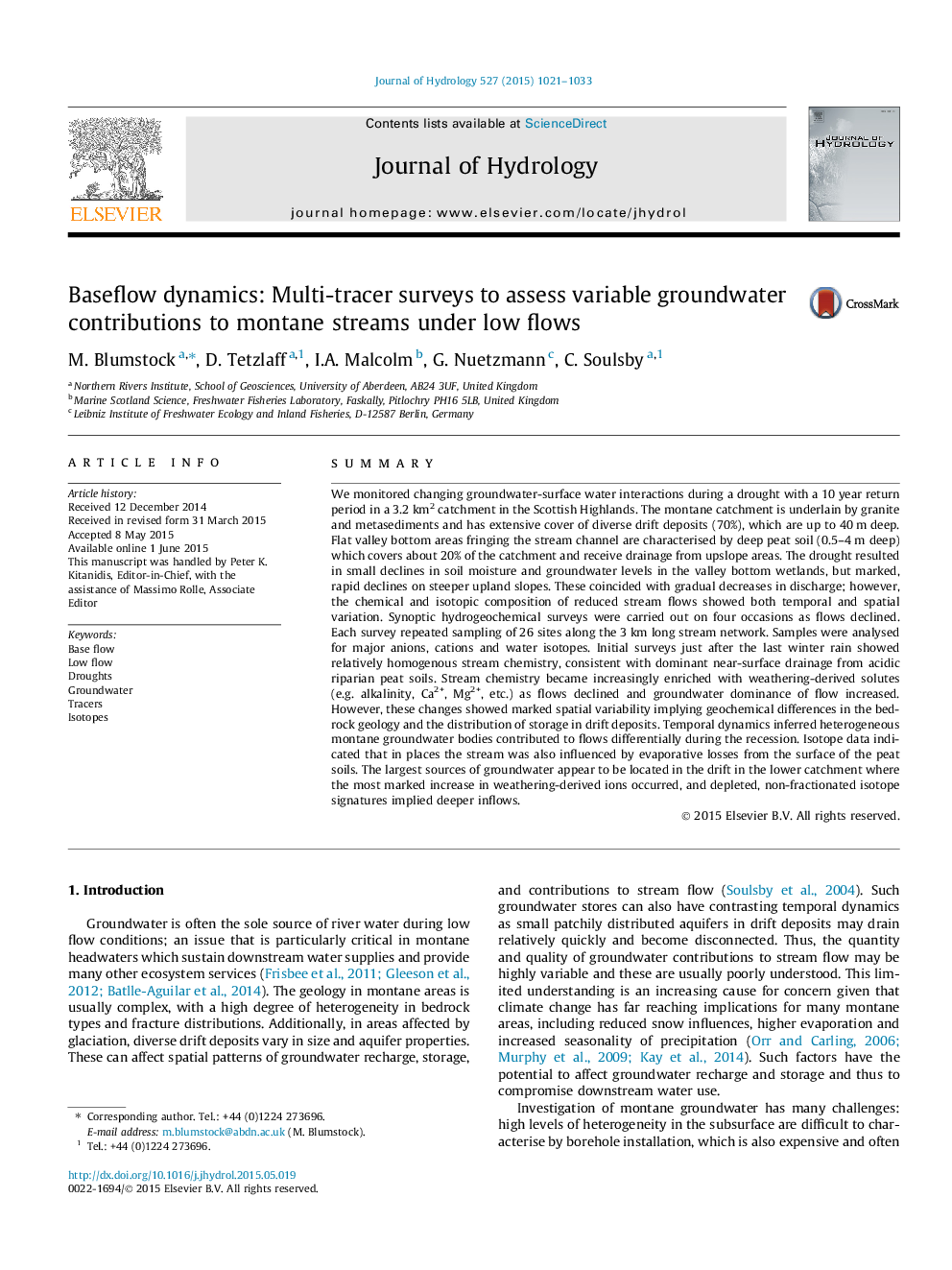| Article ID | Journal | Published Year | Pages | File Type |
|---|---|---|---|---|
| 6411230 | Journal of Hydrology | 2015 | 13 Pages |
â¢Assessing hydrochemistry in montane stream during 10 year return period drought.â¢Well-mixed near surface sources of stream flow during wet conditions.â¢Highly dynamic baseflow reflects evolving contribution of diverse montane groundwater.â¢Heterogonous groundwater stores show differences in bedrock/drift characteristics.â¢Stream water consists of deeper, older groundwater sources in lower catchment.
SummaryWe monitored changing groundwater-surface water interactions during a drought with a 10Â year return period in a 3.2Â km2 catchment in the Scottish Highlands. The montane catchment is underlain by granite and metasediments and has extensive cover of diverse drift deposits (70%), which are up to 40Â m deep. Flat valley bottom areas fringing the stream channel are characterised by deep peat soil (0.5-4Â m deep) which covers about 20% of the catchment and receive drainage from upslope areas. The drought resulted in small declines in soil moisture and groundwater levels in the valley bottom wetlands, but marked, rapid declines on steeper upland slopes. These coincided with gradual decreases in discharge; however, the chemical and isotopic composition of reduced stream flows showed both temporal and spatial variation. Synoptic hydrogeochemical surveys were carried out on four occasions as flows declined. Each survey repeated sampling of 26 sites along the 3Â km long stream network. Samples were analysed for major anions, cations and water isotopes. Initial surveys just after the last winter rain showed relatively homogenous stream chemistry, consistent with dominant near-surface drainage from acidic riparian peat soils. Stream chemistry became increasingly enriched with weathering-derived solutes (e.g. alkalinity, Ca2+, Mg2+, etc.) as flows declined and groundwater dominance of flow increased. However, these changes showed marked spatial variability implying geochemical differences in the bedrock geology and the distribution of storage in drift deposits. Temporal dynamics inferred heterogeneous montane groundwater bodies contributed to flows differentially during the recession. Isotope data indicated that in places the stream was also influenced by evaporative losses from the surface of the peat soils. The largest sources of groundwater appear to be located in the drift in the lower catchment where the most marked increase in weathering-derived ions occurred, and depleted, non-fractionated isotope signatures implied deeper inflows.
